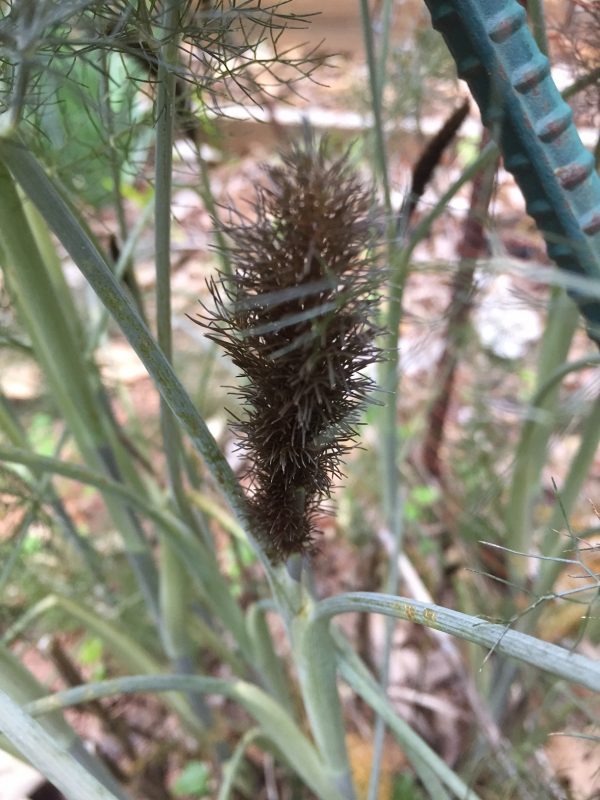Fennel, Finocchio

Foeniculum vulgare
Foeniculum vulgare var. dulce
taken from The Georgia Fruit and Vegetable Book by Walter Reeves and Felder Rushing
Fennel is a European herb known for its aromatic seeds and tender, fragrant leaves. This herb has a wonderful anise-like or licorice-like flavor. Florence Fennel, commonly called Finocchio, develops a bulb-like base used fresh or steamed. Common Fennel develops a plant that can be 4 feet tall when it is in flower. Finocchio develops a bulb-like rosette of foliage, which is harvested before it bolts. Both are tender perennials grown as annuals.
• See also Home Garden Fennel
(broken link)
WHEN TO PLANT
You may start Fennel or Finocchio indoors under lights about 6 weeks before the frost-free date (average date of last frost) for a summer crop and start them under lights in late summer for a fall crop. You can also sow seed directly in the garden after the last heavy freeze. Seed can withstand a frost but if plants are already up, they may be nipped. Started plants are not likely to be available in garden centers; they do not transplant well because they have tap roots. The number of plants depends on your tastes; you may want 6 or more if you like Fennel or Finocchio (or swallowtail butterflies!).
WHERE TO PLANT
Plant Fennel and Finocchio in a sunny location with well-prepared soil. Since they get quite large and reseed vigorously, locate them where they will have room and will not shade out lower-growing plants.
HOW TO PLANT
Prepare the soil. Sow seed directly in the garden. Thin seedlings to about 8 inches apart when they are 4 inches tall and use them in soups or sauces. Fennel and Finocchio do not tolerate transplanting well. Start them in peat pots, which you can plant without disturbing the roots. Sow several seeds per pot and thin to 1 apiece when they have germinated. Set the plants 8 inches apart in well-prepared soil.
CARE AND MAINTENANCE
After it has started to grow, Fennel or Finocchio require little care. Water them during dry weather, providing 1 inch per week.
ADDITIONAL INFORMATION
Harvest the tender leaves when the plants are 6 to 10 inches tall. Keeping the plants cut back will extend the harvest but eventually the plants will bolt and make flower stalks. To harvest seeds, cut the heads when the seeds are mature but before they begin to shatter. Hang the heads upside down in brown paper bags to finish drying, catching the seeds as they fall. Tie harvested leaves into small bundles and hang them in a warm, dry place, or dry leaves on a window screen. Store dried leaves and seeds in airtight containers for later use. Cover Finocchio bulbs with soil to blanch them when they are 2 or 3 inches in diameter. Harvest the bulbs before they bolt in hot weather. In the cool weather of fall, production may be extended until freeze-up. Late in the season, allow a few flower heads to mature and the seed to drop, which will produce seedling plants for the next year. Since they do not transplant easily, harvest the tender leaves and then hoe out the plants if they are in the way of other things. Fennel, along with Dill and Parsley, is a favorite food of black swallowtail butterfly larvae. These large black-and-yellow-striped caterpillars do not eat much but make spectacular butterflies. Collect the chrysalises that form and hatch them for a fun summertime kids’ project.










